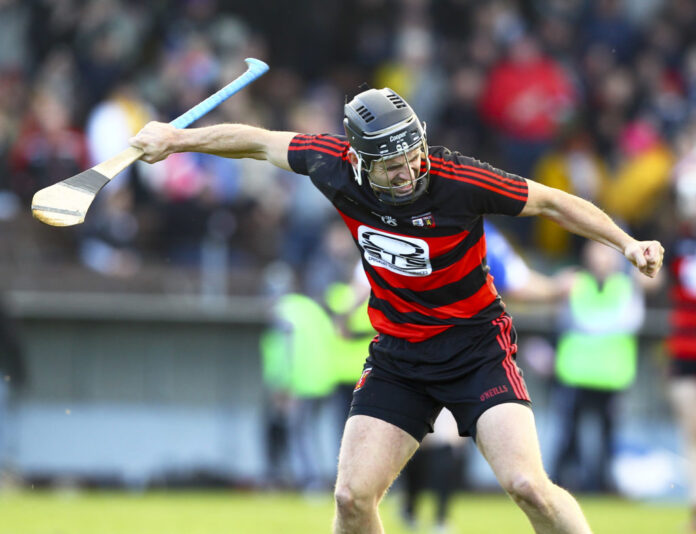
AT the 2018 Coaching and Games Conference, Shane O’Sullivan delivered a short presentation on a project his club Ballygunner had undertaken.
The former Déise hurler described how two tragedies in their locality had led the club on the outskirts of Waterford city to put in place structures to ensure that club members – especially younger ones – could have a place of constant support.
As he described it,
“Life is like a table, and on a random day something could happen that causes a leg of that table to be ripped away. Another event a month later could rip away another table leg. We as a club wanted to build a marble pillar at the centre of that table so that whatever happened, that person had the tools and support needed to deal with what life throws at them”.
In helping build that resilience in younger players, it also created a strong connection between the individual and the Ballygunner club, which became a hugely important part of their lives. And the health and well-being support tools that are acquired by these children and young adults can also be brought inside the white lines in helping the player in game situations.
Ballygunner vs Midleton
Ballygunner’s JJ Hutchinson celebrates at the end of the game
Mandatory Credit ©INPHO/Ken Sutton
Like so many in the GAA, I have spent a large part of the various lockdowns logging into webinars and coaching workshops. A blur of taking notes, screen shots, pictures and recordings. Information overload at times. But some really important learnings also. I don’t think I will fully grasp these “nuggets” until I look back over the sea of self-improvement notes and really reflect.
But taking a helicopter-view of the whole experience, in my humble opinion good coaching boils down to two basic aspects.
Firstly, the ability to deliver coaching sessions and coaching points in the simplest way possible yet also challenging the player.
And secondly, the ability to create connections.
I look back at the coaching I received in my own club Askeaton/Ballysteen when I was growing up and images and words immediately flash into my mind and take me back to the pitches and the dressing rooms.
Whether it was Finty Ryan at minor training in Askeaton during a 1 v 1 tackling drill bringing me aside and telling me that as soon as the player in possession hops the ball and takes 3 steps, pounce then as you know he has to take a solo and the ball will be there to be flicked away.
Or Albert Bourke at an u14 game in Newcastlewest asking me at halftime if the lad who was marking me (a good friend of mine Ray Massey) knew that he was my friend. His subtle way of putting it out there that I was holding back and not competing hard enough, without actually calling me out on it in front of everyone.
Or Hugh Keaveney in a dressing room in Askeaton before an u16 game with his usual pre match routine of going through the panel from 1 to 22/23 and shining a light on the strengths that that player brought to the table. On this particular occasion, I couldn’t help but smile. I had chosen to play soccer instead of a clashing football game the previous week, and when it came to my highlight reel, I expected the worst. “Pa Ranahan, good honest defender and always assured and confident on the ball…or so the soccer manager tells me anyway”. Point made and taken!
Whether it was Finty taking the time to impart a simple but effective coaching point, Albert spotting that I needed to be more aggressive and committed in what I was doing or Hugh delivering those positive player bios pregame, they all fed into helping me become a better player technically and also laying the foundations of my connection to the club. And to Gaelic Football.
Being honest, the training at the time was generally of the old school variety. But nobody knew any different. If GBA was mentioned you would think it was something a judge handed down after an altercation. The Game Based Approach consisted of a full-length game where the best players would see 90% of the ball, or a game of backs and forwards which involved the back beings ritualistically fed to the wolves as ball after ball rained in.
Club coaches today have no excuse though. The knowledge is available readily and freely, if you have an open mind. The challenge nowadays is in avoiding the urge to mimic and deliver all these fancy and convoluted games and drill.
The key is to actually take the time to prepare and plan and reflect so that the players feel they are being challenged but also involved in the process. To be able to deliver those simple key messages that will make the player feel like you are invested in making them better, while creating that social environment that makes that player want to come back the next day and improve.
In recent times I have written about the various areas in Limerick that feed into a Gaelic Footballers development. From Primary School to Post Primary School, to Third Level, to the Underage Academy. All hugely important strands in assisting the growth of the person and the player. But the club is the marble pillar. If one or even two of the other areas aren’t where they could or should be in providing support for a player, a strong club environment will ensure that he or she reaches their potential. If all areas are maxing out, the possibilities really are endless.
Clubs are gearing up for underage coming back onto GAA fields all over the county. The influence that those clubs and the coaches within them can have on a young person’s life is huge. I was lucky enough to be invited to a recent online seminar that Paul Kilgannon, he of “The CARVER Framework” fame, delivered.
After an entertaining and informative hour and a bit, he finished by reading a poem from an unknown author. This isn’t the whole poem, but is powerful, nonetheless.
“Tomorrow morning my son/daughter starts football. He is going to step out onto the field, and a great adventure that will probably include joys and disappointments begins. So, I wish you take him by his young hand and teach him the things he will have to know. This is a big order Coach, and I place my son in your hands. See what you can do for him. He’s a great fella. His Dad/Mam”.
The post Pa Ranahan: As kids return to the pitch, the impact of the GAA on their development cannot be underestimated appeared first on Sporting Limerick.


